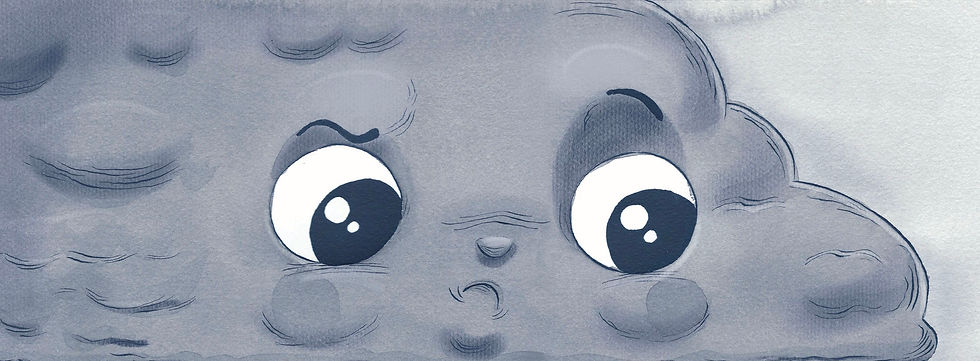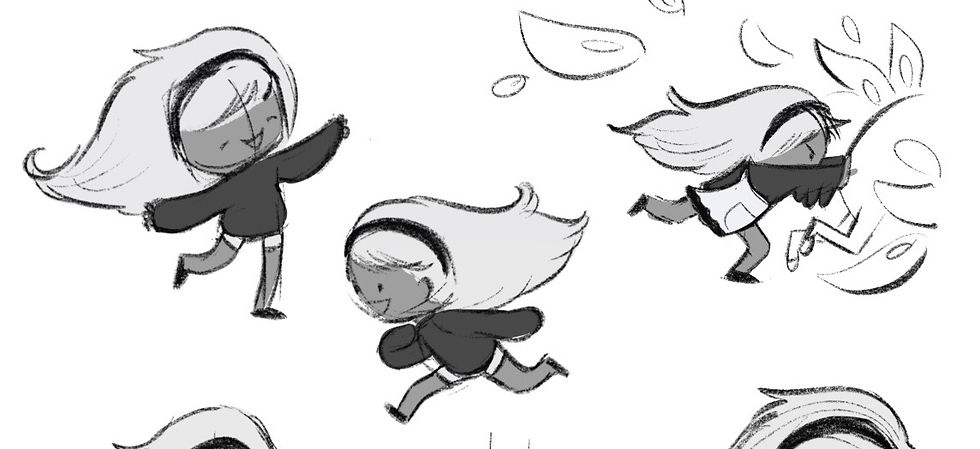Drawing Gesture to Build Story and Emotional Literacy
- Emma Tipping

- Jul 16, 2024
- 5 min read
Updated: Aug 18, 2024
By drawing gesture, picture book illustrators give parents & teachers a powerful tool to teach feelings and explore emotional literacy for kids.

Gesture drawing is one of those essential art skills that children’s book illustrators spend years learning and mastering, but that we don’t often explain to readers. Did you know for example, that by drawing gesture in kids’ illustrated books, artists are both storytelling AND helping children build emotional literacy? Drawing gesture packs a real punch!
If, as a teacher or parent, you know just a little bit about gesture and drawing gesture, you can use those cozy picture book sessions with your kids to teach emotions, normalize talking about feelings and squeeze in some serious bonding. What’s not to love?!
In this post we will explore:
What I mean by “drawing gesture”
Drawing gesture from the artist’s perspective
How parents & educators can use gesture to teach feelings of all kinds
Emotional activities for preschoolers
I’m constantly drawing gesture so I’ve also shared lots of my own artwork in this post to help you understand gesture and its power.

What do I mean by “Drawing Gesture”?
When drawing gesture, illustrators are trying to capture their characters’ emotional state and what the character is doing. We use the characters’ body language and facial expression to do this, as well as other cues such as what direction they are moving in, how their clothes are moving and how they are interacting with props.
When drawing gesture, illustrators are trying to capture their characters’ emotional state and what the character is doing.
It’s important to note that a gesture drawing is different from a static character study. You can have a drawing of a character that has lots of details about how they look, what they are wearing, etc, but still have no gesture.
For example, this drawing of my character Ophelia is informative but has no gesture:

NO GESTURE. We have great information here about what Ophelia looks like, but there is no body language, barely any facial expression and no direction or movement.
By drawing gesture when I illustrate Ophelia, I’ll be able to communicate a lot more about her personality, her emotions in the moment and what she’s doing. In short, I’ll be able to do a lot more storytelling. Like this:

WITH GESTURE. Now this is more like it! While we can’t clearly see what Ophelia’s outfit looks like in this loose sketch, I have used gesture line and movement to show that she is excited, she is happy, and she is trying to see something in the distance. This happens to be the moment when Ophelia first sets eyes on the ocean so it's a chock full of story and emotion.
Drawing gesture is a super important tool in visual storytelling. You can spotlight characters' gestures to teach feelings and build emotional literacy for kids.
Here’s another example:

NO GESTURE. This is a character study of Santa that I did, figuring out his shapes and outfit. He’s holding a pen, but aside from that, there is no gesture.

WITH GESTURE. Here’s Santa with TONS of gesture! Two rascaly elves have just played a practical joke on Santa, so not only is he feeling pretty cranky, he's also in hot pursuit of his tormenters! This illustration gives us way more insight into Santa’s personality, tells a story and gives us lots of clues about how he's feeling.
To review, by drawing gesture I can establish:
how the character is feeling
what the character is doing
Drawing gesture is a powerful tool for visual storytelling. You can spotlight characters' gestures to teach feelings and build emotional literacy for kids.
What is Emotional Literacy?
The organization, Emotionally Healthy Schools, says, “Emotional literacy is important. It gives us the ability to recognise, understand, handle and appropriately express emotions.”
The great thing about picture books is that they help kids develop their emotional literacy and their visual literacy through a fun and engaging activity. Let’s review how gesture in particular can help kids increase their emotional literacy.

Using Gesture in Kids Illustrated Books to Teach Feelings
Next time you cuddle up to read a picture book with your child, point out how the illustrator has used gesture to tell the story! Here are just a few ways that observing characters’ feelings through gesture helps young readers build emotional literacy:
Help children interpret the feelings of others with context and cues.
Understand that feelings change.
Explore why feelings changed.
Build Important Emotion Vocabulary
Teach Feelings that are more Subtle or Complex
Normalize Talking About Feelings Together
Using gesture to discuss emotions is a powerful way to bond with your kiddo and build their emotional literacy. When your kiddo is wrapped in your arms, looking at beautiful illustrations in a safe space with no pressure or expectations, you are teaching their nervous system that feelings are important and worthy of open exploration. What a gift!

Discussing gestures shows that it’s healthy and normal to talk about emotions, even if they are negative, strong, or challenging to describe.
Emotional Activities for Preschoolers
There are lots of fun and easy emotional activities for preschoolers that you can do using picture books and drawing gesture. Here are just a few! These can all be used with older children as well.
Place brightly colored sticky notes next to different characters in your book. Ask your child what emotion that character is feeling and write that feeling on the sticky note.
Find a moment in your picture book where a character’s feelings change. Ask you child how they felt at first and then how they felt next.
After reading a picture book with your child, stable together a few pieces of paper into a book. Ask your child to draw pictures of how the characters’ feelings changed throughout the story.
Do the same as above, but ask your child to draw their own feelings as they read the story.
On brightly colored sticky notes, either have your child draw faces expressing different feelings or draw them yourself. Then, ask your child to go through their picture books and place the sticky notes next to characters with each of those feelings.

I am drawing gesture all the time! Here are some examples.
As a children’s book author and illustrator, I am constantly drawing gesture in my sketchbooks and in finished illustrations. I’d love to share some examples with you! From their body language, see if you can guess which emotions each character is feeling. Check out how I use gesture line in the looser sketches below. Also, see if you can figure out what the characters are feeling and doing in each illustration.




Drawing Gesture to Help Teach Feelings
Drawing gesture is an invaluable tool in storytelling, and when children learn how to interpret these drawings in picture books, they build emotional literacy. You can help your child understand complex emotions, build their emotional vocabulary, and normalize discussions about feelings when you help them recognize gesture.
I hope this insight gives you lots of new stuff to chat about with your kiddos the next time you are reading a picture book together in my favorite gesture of all- a big warm cuddle!
READ MORE
Read more about my artistic process and being creative with your kids here:







So informative, thank you!